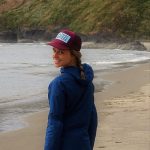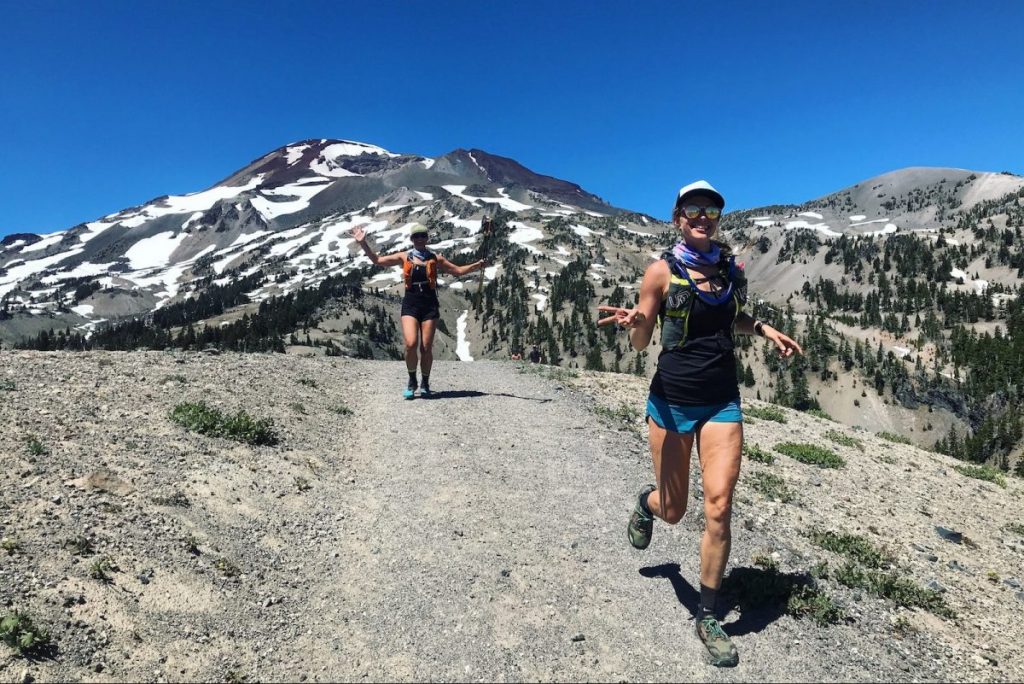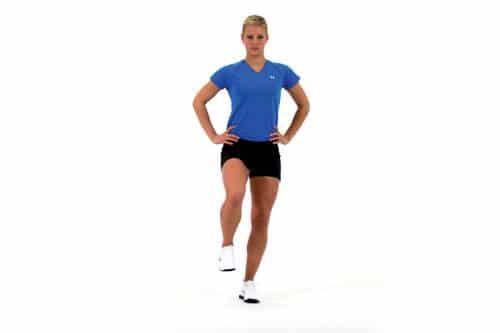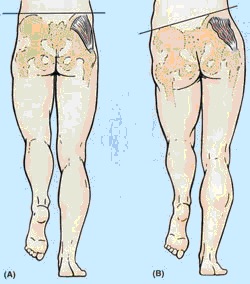Main Menu
Focused Running

Anna Wetzel is currently based in Portland, Oregon and prides herself as a “powered by plants” long-distance runner. She relocated from Chicago, Illinois last year to pursue her dreams of spending more time in nature and working with a population that shared similar interests to her. She works as an Orthopedic Physical Therapist for Bridgetown Physical Therapy and Training Studio in downtown Portland specializing in Orthopedics and the treatment of runners.
Share This Article!


By: Anna Wetzel
Throw on your clothes, grab a swig of water, tie up your shoes, and you’re off for a run! It’s simple, no thinking involved, just you, your body, and your mind on a trail. The freedom of being able to escape and run out your daily stresses and obtain a feeling of accomplishment is a beautiful thing…until it’s not. That’s when you feel that “ouch!” and then I see you in my physical therapy clinic. What happened you ask? Often, it is the very thing that I described above. Doing all of your runs at a “I feel great and strong” pace, aka too hard, and not thinking about how your body is moving in space.
I know your immediate thought is “Oh no, don’t make running more effortful,” but I promise that a little attention to your form can go a long way in terms of injury prevention and athletic performance. Think of it this way, if you were to head out to go play golf and were competing, would you just show up having never practiced swinging a club or not having an understanding of how your body should move to produce optimal results? Probably not, especially if it was in a competitive sense (think a race!). Thus, the same goes for running.
One should understand the basic biomechanical requirements of running before hitting the pavement or the trail for thousands of steps at a time on each push. The problem is that when we first find our love for running (which is often in childhood), there is no class that teaches us all the things that we should be able to do before asking our body to be pushed to the limits. That’s why I’m here to help!

Running is a series of repeated single limb impacts. Therefore, the most important thing for any runner is being able to stand on one leg. First, make sure that you can do this for one minute with good stability on both sides. Put your hands on the top of your pelvis, on both sides, and make sure that your hands are level with no dipping on either side. Also, make sure that you are not side bending towards the leg that you are standing on. These are very common signs of weakness in the gluteals. I would then recommend bringing that over an uneven surface (couch cushion/foam) and then transitioning to an eyes closed condition. This will help simulate trail and visual obstacles that you may face (rain/darkness). After you nail down your balance, transitioning to strength training exercises that are single limb biased is key (Ex: Single leg squats, single leg dead lifts, step ups, step downs). Doing all your exercises on two legs will not pay off because your body is very good at compensating for your weaknesses and will mask an underlying imbalance when not challenged further by standing on one leg.


Step two is being able to do a single leg squat. Each time you land on your leg, the forces are roughly 1.5 times your body weight through that leg. That means you need to be able to squat on one leg with neutral alignment, which consists of keeping your knee aligned with your second toe and sitting your hips back. If you notice that your knee is crossing the seam of your pants, you are at risk of injury. In the physical therapy world, we call this dynamic knee valgus, which has been correlated with several hip, knee, and ankle injuries and especially with tendinopathies (common running injuries).
The good news is that there is evidence to suggest that one single motor control session with a trained professional to cue proper alignment can significantly change the way you load your body and thus mitigate injury risk. Once you get the form down, doing single leg squats as a regular exercise is a great preventative measure. It trains your musculoskeletal system to handle the load that you are going to put on it with longer runs and will help your form stay stable during fatigued states.

Step three, let’s check in on those lower legs! Did you know that the calf complex is the area of your body that loses strength most rapidly with aging? This is often a big contributor to older adults having a more shuffling type of walking pattern. The good news is that this is preventable with sustained, consistent strength training. My reassessment sign for calf strength is single leg heel raises with your knee straight and with your knee bent. I like to see >30 heel raises with equal heel clearance on each lift with the knee straight (gastrocnemius) and with the knee slightly bent (soleus) prior to increasing running mileage. Sure, you may be able to run without the strength level that I just described, but the problem is that you are lacking in a huge muscle group that helps absorb shock and thus your knee and hip will subsequently take more loading and are at increased risk of injury.

After you have successfully nailed down these movements, you then want to transition into focused running. This means being present on your runs and bringing awareness to how your foot hits the ground and how this subsequently impacts the knee, hip, back and from a top down approach as well. If you demonstrate good control with your single leg balance (level pelvis and ability to sustain for >1 minute), neutral mechanics in a single leg squat, as well as adequate strength in the calves, you should be able to integrate the below running cues into your daily routine. Note: Tuning into your running form can make running feel more effortful at first because you are changing the muscles that you are recruiting and the way in which they are being contracted. Allow 2-3 weeks for increased fluidity and always proceed with caution. I recommend adding one 10-15-minute window into your running routine during the week to hone in on form. It will gradually become a natural adjustment in the rest of your runs. Below are key considerations:
Maintain a window between your knees (roughly 2 fists width).
- Cue: Your knees have positively charged magnets on them and are repelling apart. This will engage the outer hip for increased stability.
Stay light on your feet, striking midfoot, and getting off of your foot quicker (cadence increase).
- Cue: Running on egg shells.
Minimize jumping/vertical bounce when running.
- Cue: Pretend like you have a bowl of cereal filled to the brim on the top of your head and you don’t want it to spill.
Minimize hip drop and up/down movement through the hips.
- Cue: Place your hands on your waistband and make sure that it stays level.
Slight forward trunk lean to utilize gravity to your advantage.
- Cue: In standing lean just enough forward that you feel like you are falling and step to catch yourself.

With these tips and self-assessment tools, you should be armed and ready to begin focused running. Remember, change takes time and patience, but being aware of how you move will serve you well in the long-term. Your body will thank you!
About the Author

Anna Wetzel is currently based in Portland, Oregon and prides herself as a “powered by plants” long-distance runner. She relocated from Chicago, Illinois last year to pursue her dreams of spending more time in nature and working with a population that shared similar interests to her. She works as an Orthopedic Physical Therapist for Bridgetown Physical Therapy and Training Studio in downtown Portland specializing in Orthopedics and the treatment of runners.
Share This Article!













4 Responses
Fantastic article! Thank you! Dealing with some issues related to this exact thing. Also, I am powered by plants as well. 🙂
Thank you for this! What a great blog post. I found this very useful and likely applicable to running related body issues I’ve been dealing with the past year. I’m going to try these at home tonight. Is there someone in the Seattle area that you’d recommend that provides services/support to runners like you do?
Thanks so much Jen! Happy to help! Chris Johnson from Zeren PT is a running PT guru. Highly recommend
that is South Sister and not Mt Hood